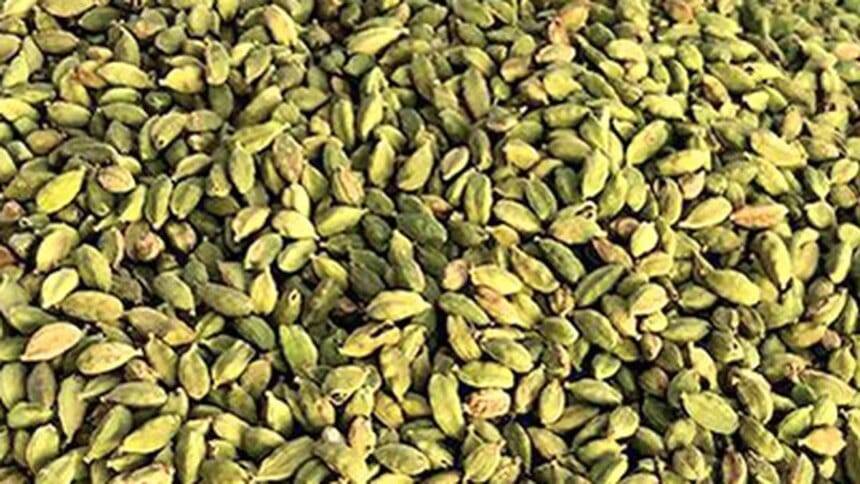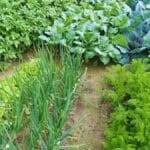Main Points In Hindi (मुख्य बातें – हिंदी में)
-
उत्पादन में गिरावट: चालू फसल सीजन में इलायची के उत्पादन में 40 प्रतिशत की गिरावट की संभावना है, जो लंबे समय तक सूखे और उसके बाद हुई मूसलधार बारिश के कारण हुई है।
-
उच्च कीमतें: व्यापारियों ने सतर्कता दिखाई है क्योंकि इलायची की कीमतें ₹2,000 से ऊपर हैं, नीलामी मंच पर यह ₹2,300 प्रति किलोग्राम तक पहुँच गई है, जिसका प्रभाव स्थानीय मांग पर पड़ा है।
-
फफूंद का प्रकोप: फरवरी से मई तक सूखे के कारण पौधों के स्वास्थ्य पर नकारात्मक प्रभाव पड़ा, जिसके बाद बारिश ने फफूंद के प्रकोप को बढ़ा दिया, जिससे उत्पादकता कम हुई है।
-
गुणवत्ता और निर्यात चुनौतियाँ: भारतीय प्रीमियम इलायची को निर्यात बाजार में अपेक्षित स्वीकृति नहीं मिल रही है, विशेषकर ग्वाटेमाला की प्रतिस्पर्धी उपज की वजह से।
- स्थिरता की कमी: उच्च मूल्य अस्थिरता सट्टेबाजों के लिए अल्पकालिक लाभ पैदा कर सकती है, लेकिन यह उद्योग को नुकसान पहुंचा रही है, जिससे अंतरराष्ट्रीय बाजार में विकार और अनिच्छा बनी हुई है।
Main Points In English(मुख्य बातें – अंग्रेज़ी में)
Here are the main points from the article:
-
Significant Drop in Cardamom Production: The current season is expected to see a 40% decrease in cardamom production due to adverse weather conditions, including prolonged drought from February to May and heavy rainfall from June to August.
-
Price Hike and Market Response: Traders are adopting a cautious approach as cardamom prices have risen above ₹2,000 per kilogram, with auction prices reaching up to ₹2,300. Farmers are only meeting market demands, with lingering stock from the previous year’s harvest.
-
Impact of Fungal Outbreak: The prolonged drought negatively affected plant health, while heavy rains caused an increase in fungal outbreaks, further reducing productivity in cardamom plantations.
-
Weak Domestic Demand: Local demand is weak due to financial constraints and high prices, with expectations for a boost in demand around Diwali not generating much market enthusiasm. Increased domestic and export demand is anticipated only after November.
- Market Instability and Speculative Gains: The current price volatility may create short-term gains for speculators but is detrimental to the wider industry, leading to chaos in sales and hesitance from international buyers due to the unpredictable pricing environment.


Complete News In Hindi(पूरी खबर – हिंदी में)
चालू फसल सीजन में इलायची के उत्पादन में 40 प्रतिशत की गिरावट आने की संभावना है क्योंकि इस साल फसल पहले फरवरी से मई तक सूखे और फिर जून से अगस्त के दौरान मूसलाधार बारिश से प्रभावित हुई थी।
व्यापारियों के अनुसार, वे अब सतर्क रुख अपना रहे हैं क्योंकि कीमतें ₹2,000 से ऊपर चल रही हैं और नीलामी मंच पर ₹2,300 प्रति किलोग्राम तक पहुंच गई हैं। इन कीमतों पर, वे केवल बाजार की आवश्यकताओं को पूरा कर रहे हैं।
इडुक्की के वंदनमेडु में नीलामीकर्ताओं में से एक, केसीपीएमसी के महाप्रबंधक पीसी पुन्नूस ने कहा कि इलायची का उत्पादन पिछले साल के अनुमानित 25,000 टन के मुकाबले 30-40 प्रतिशत कम होने की संभावना है। क्षेत्र की स्थिति बहुत खराब है और उत्पादकता के मामले में किसानों के लिए यह सबसे खराब वर्षों में से एक है। नीलामी मंच पर, 30-40 प्रतिशत कैप्सूल बचे हुए स्टॉक हैं या पिछले साल की उपज हैं।
फफूंद का प्रकोप
फरवरी से मई तक लंबे समय तक चले सूखे ने पौधों के स्वास्थ्य और पहली फसल की संभावना पर नकारात्मक प्रभाव डाला है। जून से अगस्त तक मूसलाधार बारिश ने फफूंद के प्रकोप को बढ़ा दिया है जिससे चालू वर्ष में उत्पादकता की गुंजाइश और कम हो गई है। उन्होंने कहा कि इसके साथ-साथ हवा से भी नुकसान हुआ है और इन कारकों ने इलायची के बागानों को तबाह कर दिया है।
मूल्य पक्ष पर अनुकूल रुझान के बावजूद, पुन्नोज़ ने कहा कि भारतीय प्रीमियम रेंज की इलायची को निर्यात बाजार में आवश्यक स्वीकृति नहीं मिल रही है, खासकर जब ग्वाटेमाला की प्रतिस्पर्धी उपज खाड़ी बाजारों में प्रतिस्पर्धी है।
इडुक्की में इलायची बोने वाले एसबी प्रभाकर के अनुसार, वित्तीय तंगी और ऊंची कीमतों के कारण स्थानीय मांग कमजोर है। दिवाली की अपेक्षित मांग से बाजार में उत्साह नहीं है। नवंबर के बाद घरेलू और निर्यात मांग बढ़ने की उम्मीद है और दिसंबर के बाद कीमतों में कुछ सुधार देखने को मिल सकता है। पश्चिम एशिया में तनाव से फिलहाल निर्यात को मदद नहीं मिल रही है।
सट्टेबाजों के लिए अल्पकालिक लाभ
जनवरी से मई तक अल नीनो सूखे के कारण उत्पादन में गंभीर गिरावट आई है, जून में गिरावट और सितंबर में हवाओं और उच्च तापमान के कारण और अधिक क्षति हुई है। उन्होंने कहा कि मौजूदा नीलामी आवक में से 60-70 प्रतिशत अभी भी पिछले सीजन की फसल से है, जिसके नवंबर के मध्य तक ही समाप्त होने की उम्मीद है।
बोदिनायकनूर स्थित इलायची निर्यातक एसकेएम धनवंतन ने कहा कि कीमतों में मौजूदा उच्च अस्थिरता सट्टेबाजों के लिए अल्पकालिक लाभ पैदा कर सकती है, लेकिन यह व्यापक उद्योग के लिए हानिकारक है। इसके बजाय, इसने बिक्री में अराजकता पैदा कर दी है, खासकर अंतरराष्ट्रीय बाजारों में, जहां खरीदार अस्थिर मूल्य निर्धारण वातावरण में शामिल होने के लिए अनिच्छुक हैं। अधिक पूर्वानुमानित मूल्य निर्धारण वातावरण अंतरराष्ट्रीय खरीदारों के बीच विश्वास पैदा करता है, जिससे वे प्रभावी ढंग से योजना बनाने और बजट बनाने में सक्षम होते हैं, जिससे मांग स्थिर होती है।
Complete News In English(पूरी खबर – अंग्रेज़ी में)
In the current cropping season, cardamom production is expected to drop by 40% due to adverse weather conditions. The crops have been affected by drought from February to May, followed by heavy rainfall from June to August.
Traders are currently adopting a cautious approach as prices have risen above ₹2,000, reaching ₹2,300 per kilogram at auction. They are only fulfilling market demands at these prices.
According to PC Punnus, the general manager of KCPMC, a trader in Vandanmedu, cardamom production is projected to be 30-40% lower than last year’s estimate of 25,000 tons. The current condition is poor, making it one of the worst years for farmers in terms of productivity. On the auction platform, 30-40% of the available stock consists of last year’s yield.


### Fungal Outbreak
The prolonged drought from February to May negatively impacted plant health and initial crop yields. The heavy rains from June to August worsened fungal outbreaks, further diminishing productivity potential. Additionally, wind damage has also harmed cardamom plantations.
Despite favorable price trends, Punnus noted that Indian premium cardamom is not gaining necessary acceptance in export markets, particularly with competitive Guatemalan crops dominating the Gulf markets.
SB Prabhakar, a cardamom grower in Idukki, reported weakened local demand due to financial strains and high prices. There is no excitement in the market despite expectations of demand during Diwali. He anticipates that domestic and export demand might increase after November, with possible price improvements after December. Current geopolitical tensions in West Asia are hindering exports.
### Short-term Gains for Speculators
The production drop has been severe this year due to the El Niño drought from January to May, along with further declines from winds and high temperatures in June and September. Currently, 60-70% of the auction entries are still from last season’s crop, which is expected to run out by mid-November.
SKM Dhanwantan, a cardamom exporter based in Bodinayakanur, suggested that the current price volatility could create short-term gains for speculators, but it is detrimental to the broader industry. This instability has caused chaos in sales, especially in international markets, where buyers are reluctant to engage in a fluctuating pricing environment. A more predictable pricing structure would build trust among international buyers, enabling them to plan and budget effectively, leading to stabilized demand.
Source link




